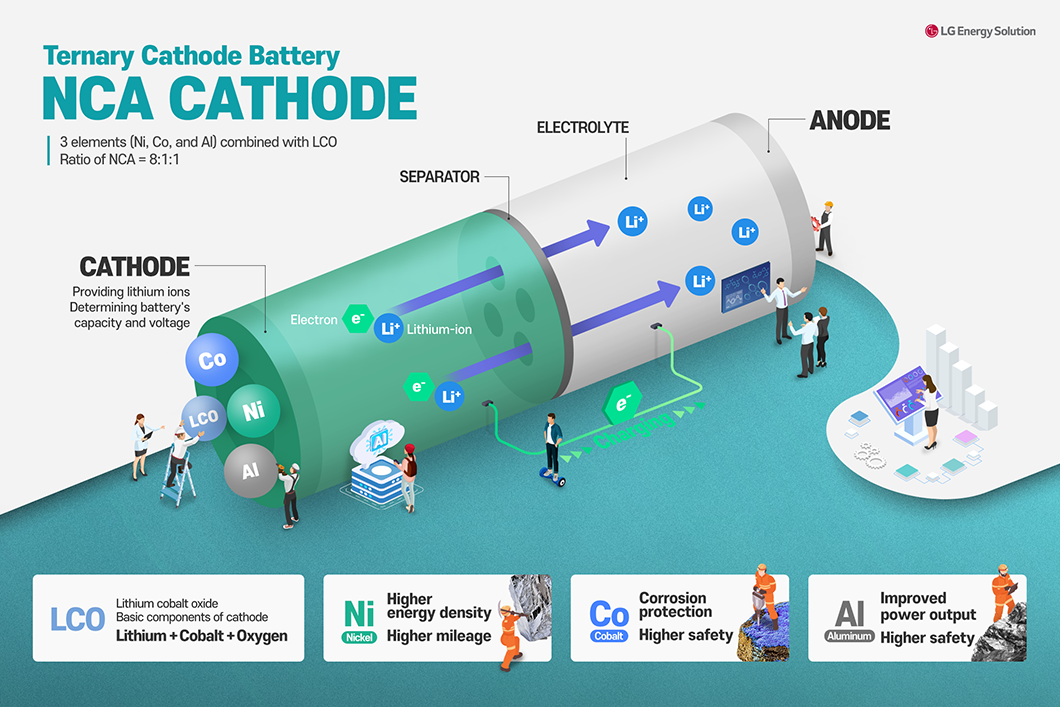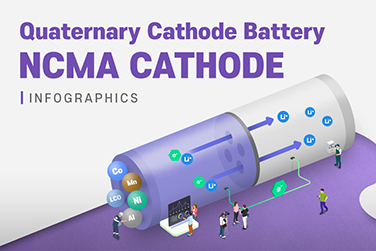We explored NCM cathode last time. Now, we will delve into NCA cathode. The two are different in the combination and ratio of elements. We will learn more about the constituents of NCA cathode and the characteristics of the batteries with an NCA cathode through infographics.

NCA Cathode Offers High Energy Density
One of the 4 key components of lithium-ion batteries, the cathode is where lithium ions are stored and the determiner of battery capacity and voltage.
In NCA cathode, nickel, cobalt, and aluminum are added to lithium cobalt oxide (LCO). Since three elements are combined as in the NCM cathode, a battery with NCA is also called the NCA ternary cathode battery.
The three elements have different roles as the raw materials of the cathode. Nickel enhances energy density and cobalt raises safety. Last but not least, aluminum is related to battery power output and safety.
NCA cathodes achieve higher energy density and capacity by increasing the nickel content like NCM cathodes, composed of nickel, cobalt, and manganese. Additionally, aluminum is used instead of manganese, enhancing stability and battery power output. Furthermore, as the nickel content increases, the proportion of costly cobalt decreases, leading to a reduction of production costs—a characteristic similar to that of NCM cathodes. However, due to their high energy density, NCA cathodes can be relatively less stable, which is why they are primarily used in mobility and IT batteries, such as cylindrical cells.
The different combinations of NCM and NCA cathodes offer different battery performance and batteries have come to be used for various purposes. Accordingly, Korean battery makers are putting special effort into producing NCM and NCA ternary cathode batteries.
For further improvement of the safety of the batteries, battery makers are conducting research on quaternary cathode batteries, adding one more element to the ternary cathode batteries.





